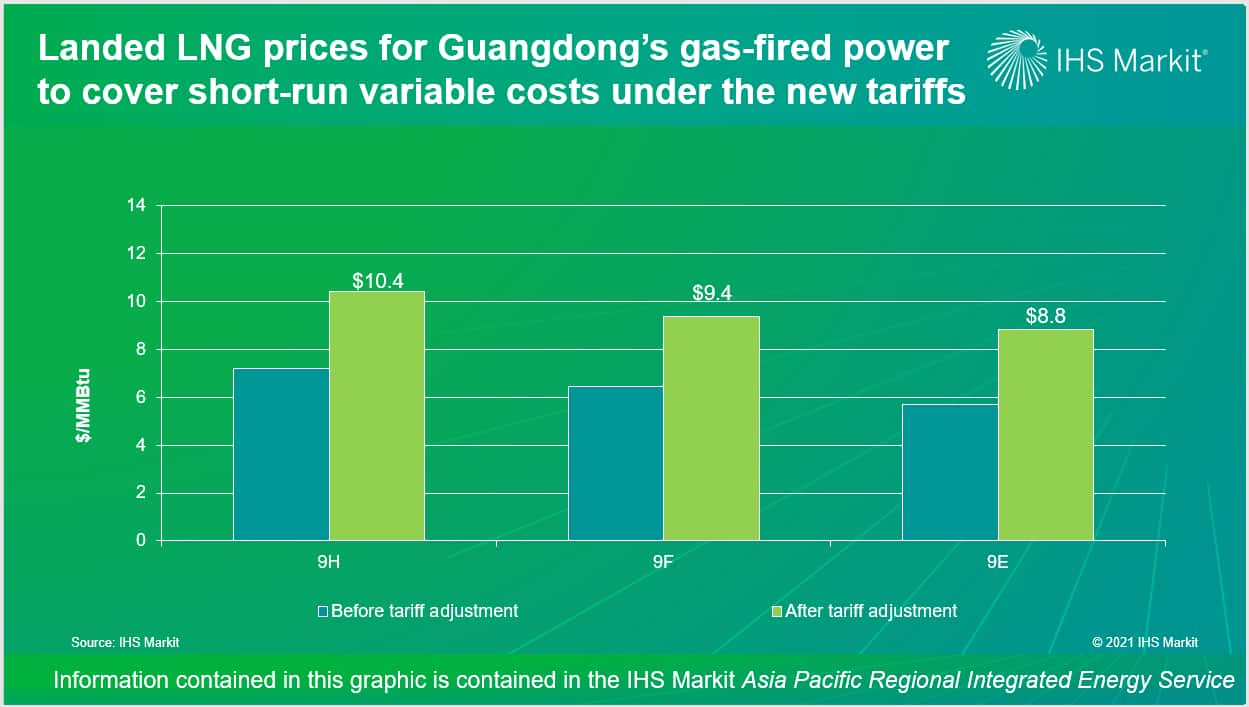Guangdong’s gas-fired power: Significantly higher on-grid tariffs still do not guarantee profitability
In mid-May 2021, Guangdong started to experience a power supply crunch that led to power rationing in the industrial sector. This was the result of a combination of factors on both supply and demand. On one hand, strong economic rebound and an early heat wave boosted power demand. On the other hand, hydropower imports, which were 30% of the provincial power supply in 2020, remained flat owing to low hydro level and high power demand in the exporting region. Local thermal power, including gas units, therefore had to run at much higher utilization rates than normal. The risk of power supply shortage will remain through the rest of the summer as the peak demand season doesn't come until July and August.
Effective 1 June 2021, the Development and Reform Commission of Guangdong suspended the low gas-fired power on-grid tariffs for generation beyond annual utilization hours, allowing gas-fired power above planned utilization hours to enjoy the same tariffs for planned utilization hours. The new tariffs represent a significant increase for gas-fired power generation above the planned annual utilization rate—31-38%—depending on unit type.

Still, feed gas cost will still be a challenge. The new tariffs can cover short-run marginal costs up to $10.4/MMBtu landed price of LNG for 9H units, which account for 5% of the 29 GW operating capacity. The break-even prices are lower for other units—$9.4 for 9F units and $8.8 for 9E units. In comparison, the current LNG spot prices to North Asia are above $11/MMBtu for July and August deliveries.
A policy-based decision to run more gas-fired power could lead to significant incremental LNG demand and drive up spot prices. If all 9F units, or 65% of the current capacity, run at a 60% capacity factor in July and August, the additional gas demand could be 1.4 Bcm in just these two months, equivalent to 1 million metric tons or 14 cargoes.
Learn more about our coverage of the Asia Pacific energy market through our Asia Pacific Regional Integrated Service.
Jenny Yang is a Senior Director covering Greater China's gas and LNG analysis.
Xiao Lu is an Associate Director covering Greater China's gas and power analysis.
Posted on 25 June 2021
This article was published by S&P Global Commodity Insights and not by S&P Global Ratings, which is a separately managed division of S&P Global.


